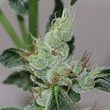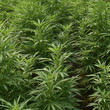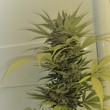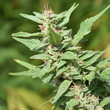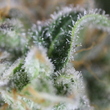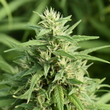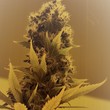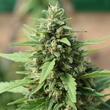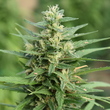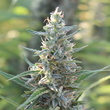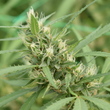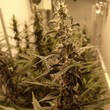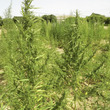Introducción
Considering that hemp (Cannabis sativa L.) is a multi-purpose crop, in the last decades, it has progressively recovered its importance, because of the demand of non-food crops in agriculture and other derivatives as food sources. Regarding to its agronomical management, this crop requires low-inputs of water and fertilizers, and it is possible its cultivation in conventional farms without using agrochemicals for weeds, pest and diseases control, especially interesting in case that the goal will be the extraction of secondary metabolites for pharmaceutical, medicinal and research purposes.
Despite the wide range of agro-ecological conditions in which hemp can be successfully cultivated, it requires attention to some physiological points such as sowing time, irrigation dose or plant density, among others. In this sense, has a high susceptibility to air temperature and photoperiod, directly determining the starting point of flowering stage. Thus, there is equilibrium between the flowering starting point and the plant capability to accumulate dry matter. Relating to the temperature requirements of hemp, its cultivation must be developed during the late-spring and summer. In hemp, secondary metabolites (cannabinoids, terpenoids, and polyphenols) are produced in all aerial parts of the plants, mainly in the leaves and female inflorescences, as compounds of the resinous glandular trichomes, and its production is directly related to the plant chemotype, growth conditions and the phenological stage of harvested plants.
The cultivars used as source of dry raw material for medical purposes correspond to medicinal varieties asexually propagated, being commonly cultivated in pots in high technological greenhouses, or grow rooms under controlled conditions. Until today, there are not evidences of previous agronomical experiences on cultivating industrial hemp cultivars as source of dry raw material for biomedical purposes under open field conditions or under plastic macro-tunnels therefore, the aim of this study was to assess the field performance of two selected hemp cultivars (Carma and Ermes), seeking the most feasible agronomical practices in order to obtain the best yield in flowers and leaves, and content of cannabinoids during two-year monitoring seasons in a Mediterranean environment.
Materiales y métodos
The trial was carried out for two years (2012–2013) in an experimental farm belonging to the Andalusian Institute of Training and Agricultural Research (IFAPA, in Spanish), located in the Guadalquivir river basin, SW Spain (37° 301 47″ N; 05° 581 0211W) as the result of the established collaboration between IFAPA and the company Phytoplant Research S.L.
The local climate is typically Mediterranean-dry, with an annual rainfall of 550mm. The soil of the experimental plot is a Typical Fluvisol (Soil Survey Staff 2006), with a useful depth up to 2.5m, low content of organic matter and its texture is clayey loam with a value of pH=8.2.
Two monoecious cultivars were used, cv. Carma (CBG-chemotype) owned by Vivacell Biotechnology Spain S.L., and cv. Ermes (CBD-chemotype) owned by Phytoplant Research S.L. with application number 2002/ 0483, registered in the Community Plant Variety Office, and with contents of Δ9-THC below to 0.2%.
At the end of each season, the fresh weight and the height of plants were measured. After harvesting, plants were air dried and then were processed, dry weight was recorded, leaves and flowers were pulled apart from the stems, obtaining the dry weight of flowers and leaves, and the dry weight of stems and branches. According with the law determination of THC content of hemp varieties was performed as well as simultaneous the determination of cannabinoids: cannabidiol (CBD), cannabichromene (CBC), Δ9-tetrahydrocannabínol (Δ9-THC), and cannabigerol (CBG).
The experimental design was of randomized complete blocks, considering four replications per cultivar, irrigation dose, plant density and sowing time. An experimental unit of 4×6m was used, with 20, 10, 6 plants per row for PD1, PD2, and PD3, respectively. Relating to the experience in macro-tunnels (2013), it was used an experimental unit of 4×10m, using four replications for each cultivar.
The studied parameters were sowing time (ST), Irrigation dose (ID), and plant destity (PD); and the interactions among these parameters. The analyses were independently done for each cultivar and it was defined the most recommendable combination of irrigation dose, plant density and sowing time for each cultivar, finally, for 2013, and independently for each cultivar there were considered eight different cases (two plant densities × two sowing times × two irrigation treatments (under open field conditions).
Resultados
The best plant densities according to the findings were PD1 and PD2 in both cultivars during 2012. It was not enough clear the yield response to irrigation doses during 2012, both irrigation strategies (ID1 and ID2) were considered again in 2013. An early sowing time was tested in this season; and a different cropping system (CS2); in which, plants were grown under plastic macro-tunnels. As in open field conditions (CS1); factors such as ST, PD and ID promoted significant effects in the yield parameters in both cultivars the most important factor was ST, followed by PD and finally ID. In this line, ST1 promoted significant improvements
In this regard, it could be assumed that the best results would be recorded with ST1, ID1 and PD1 in the most important yield parameters.
For both cultivars and according to our findings all yield parameters showed significant improvements for plants grown in macro-tunnels (v. Ermes, plants grown under plastic produced 18% more whereas cv. Carma, the obtained a yield 1.5 times higher under plastic than under open field conditions).
In view of the obtained results, irrigation doses, the sowing time and the system used, under plastic macro-tunnels or open-field conditions must be taking in count to maximize the yield.
Regarding plant densities, the highest yield values were reported by rate of 33,333 plants ha−1. the results derived from irrigation dose (ID) in terms of biomass production were not enough clear during 2012, although ID1 offered higher in both cultivars. Moreover, during 2013, ID1 showed significant improvements in both cultivars, 1.64 and 1.43 times higher than ID2 for cvs. Ermes and Carma, respectively.
During the first season (2012), the impact of the different agronomical practices on cannabinoids production was studied for both cultivars. Relating to cv. Ermes, both ID and PD offered clear effects in CBG contents, ID1 induced higher contents in CBG, whereas the higher contents of CBG were obtained for PD3. Relating to cv. Carma, more important effects were registered by ID in CBC and CBG, giving the highest contents ID1 More evident were the effects caused by PD in this cultivar regarding CBD, CBC, Δ9-THC and CBG, the highest contents were obtained for the case of PD1 and PD2. Regarding the cross effect, the highest contents were associated with ID1PD1, especially for the case of CBD, CBC, and CBG in both varieties.
During 2013, for cv. Ermes, ST and PD had differences in the content of cannabinoids, ST1 showed higher contents in CBD, CBC, Δ9-THC, and CBG, whereas ID2 showed the highest values for this parameter too. The cross effect of ST, ID and PD, it is noticeable in general
More interesting were the results when we compared cannabinoids in cv. Ermes under two different growing conditions, the content of cannabinoids was significant higher in macro-tunnels, CBD content was 1.3 times higher, and CBC and Δ9-THC were 1.7 and 1.96 higher in the same conditions. Regarding to cv. Carma, ST promoted effects in the content of cannabinoids, but only in CBC content. About the cropping system, as the same than the previous one in macro-tunnels showed higher contents of CBG. The effects of irrigation during 2012 no differences were observed in CBD in cv. Ermes, although, results during 2013, ID2 produced 1.17 times more CBD than ID1.For cv. Carma, recommendable an irrigation dose close to 100%.
Decisively, according to the ST effects, high significant improvements were associated to ST1, in both cultivars and under open field conditions, the best results obtained for sowing times would be around Mid-May and also under plastic tunnels.
Conclusión
This work presents the most relevant results in terms of agronomical and chemical responses of two industrial hemp cultivars grown under non-controlled conditions for non-psychotropic cannabinoids extraction. According to the findings, under open field conditions, as Ermes as
Carma evidenced good responses for sowing times close to the end of April – beginning of May; using irrigation doses close to the maximum crop evapotranspiration rate, and plant densities between 33,333 and 16,666 16,667 plants ha−1. However, comparing the obtained results between open field conditions and under plastic-tunnels, we can conclude that the best cropping system for hemp cultivation under Mediterranean conditions would be the second of these systems, although many future strategic lines should be considered, as studying the effects of early sowing times and different plant densities for this system, similar to those tested under open-field conditions.
Otras publicaciones
Ver más
Ver más
Ver más
Ver más
Ver más
Ver más
Ver más
Ver más
Ver más
Ver más
Ver más
Ver más
Ver más
Ver más
Ver más
Ver más
Ver más
Ver más
Ver más
Ver más
Ver más
Ver más
Ver más
Solicita información
¿Te podemos ser de ayuda? ¿Tienes alguna duda sobre nosotros? Escríbenos y contactaremos contigo cuanto antes.
